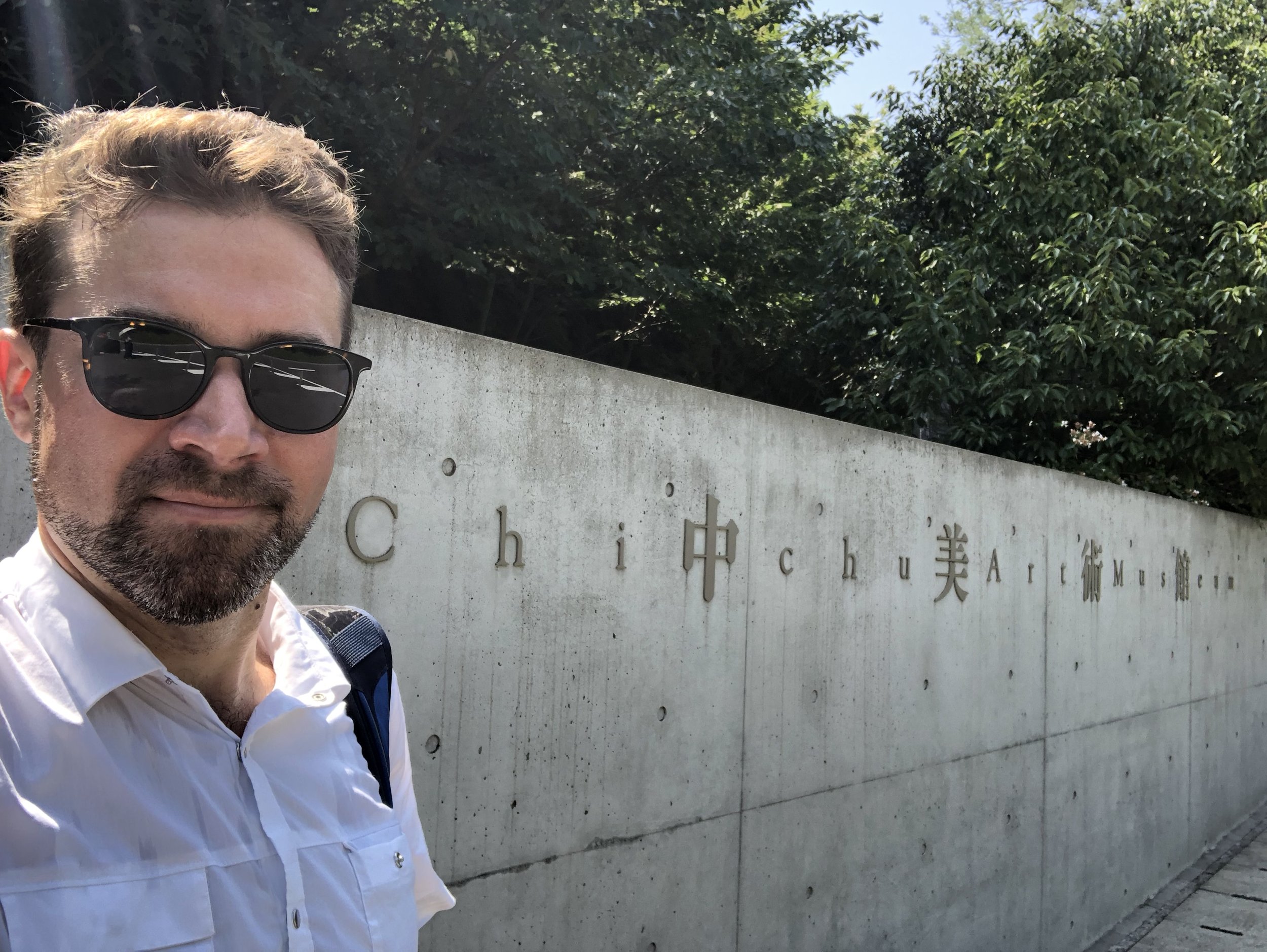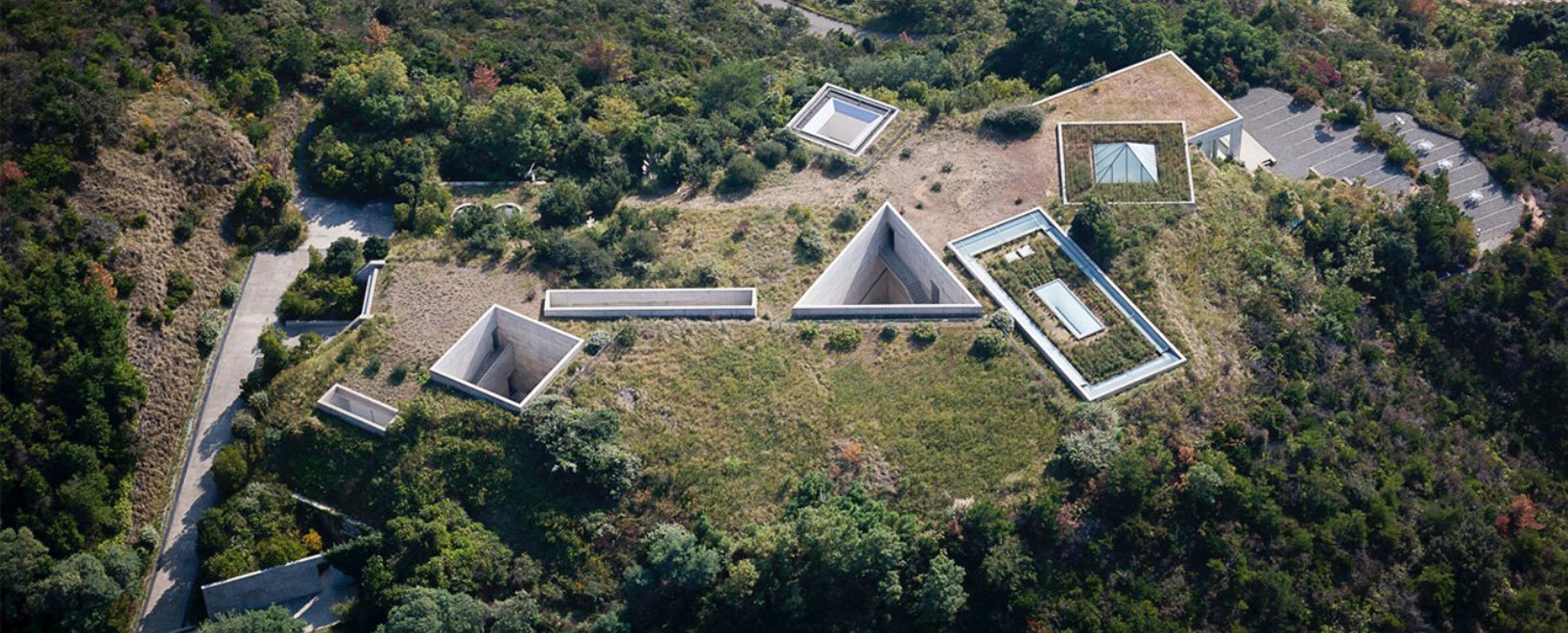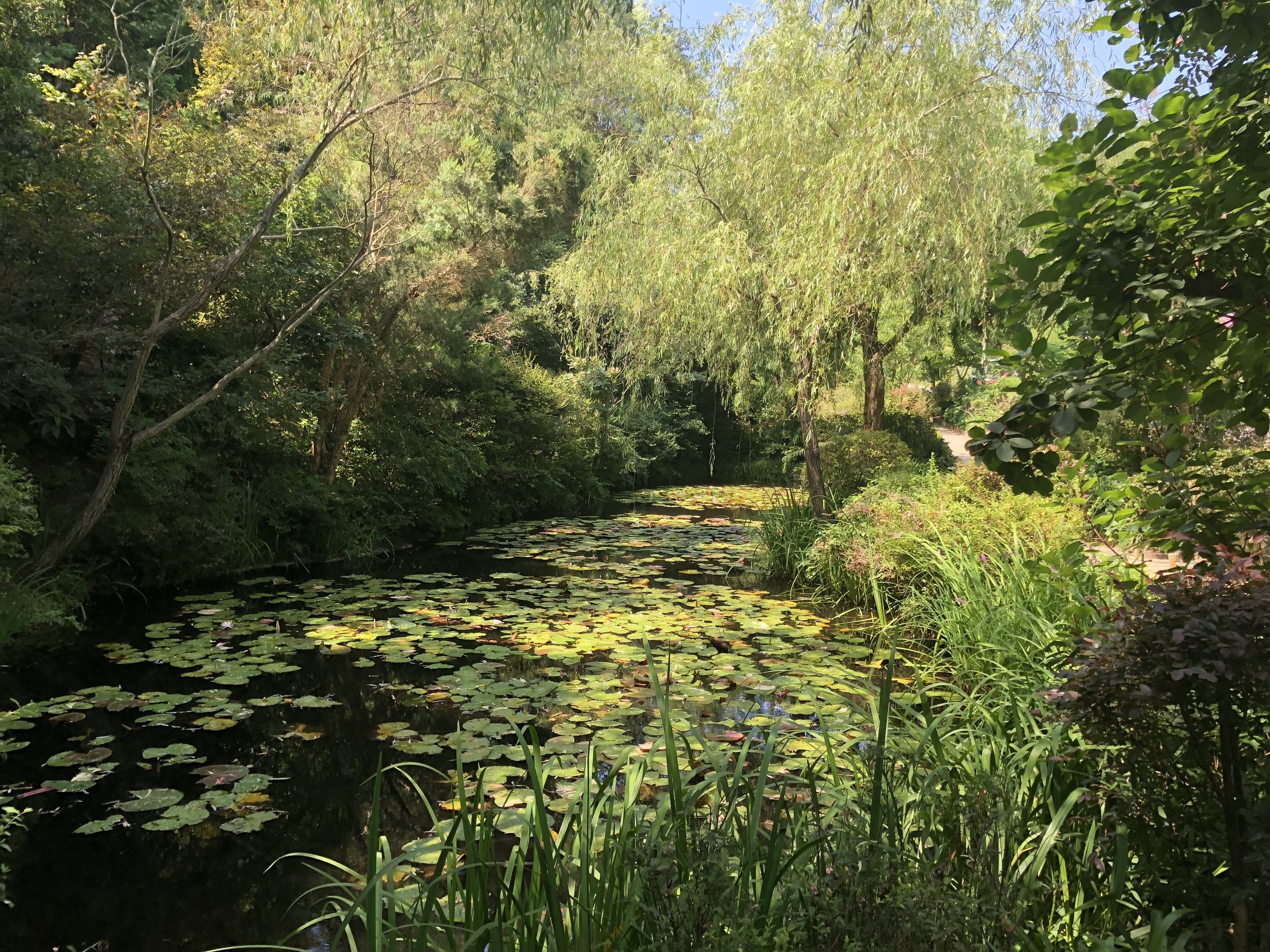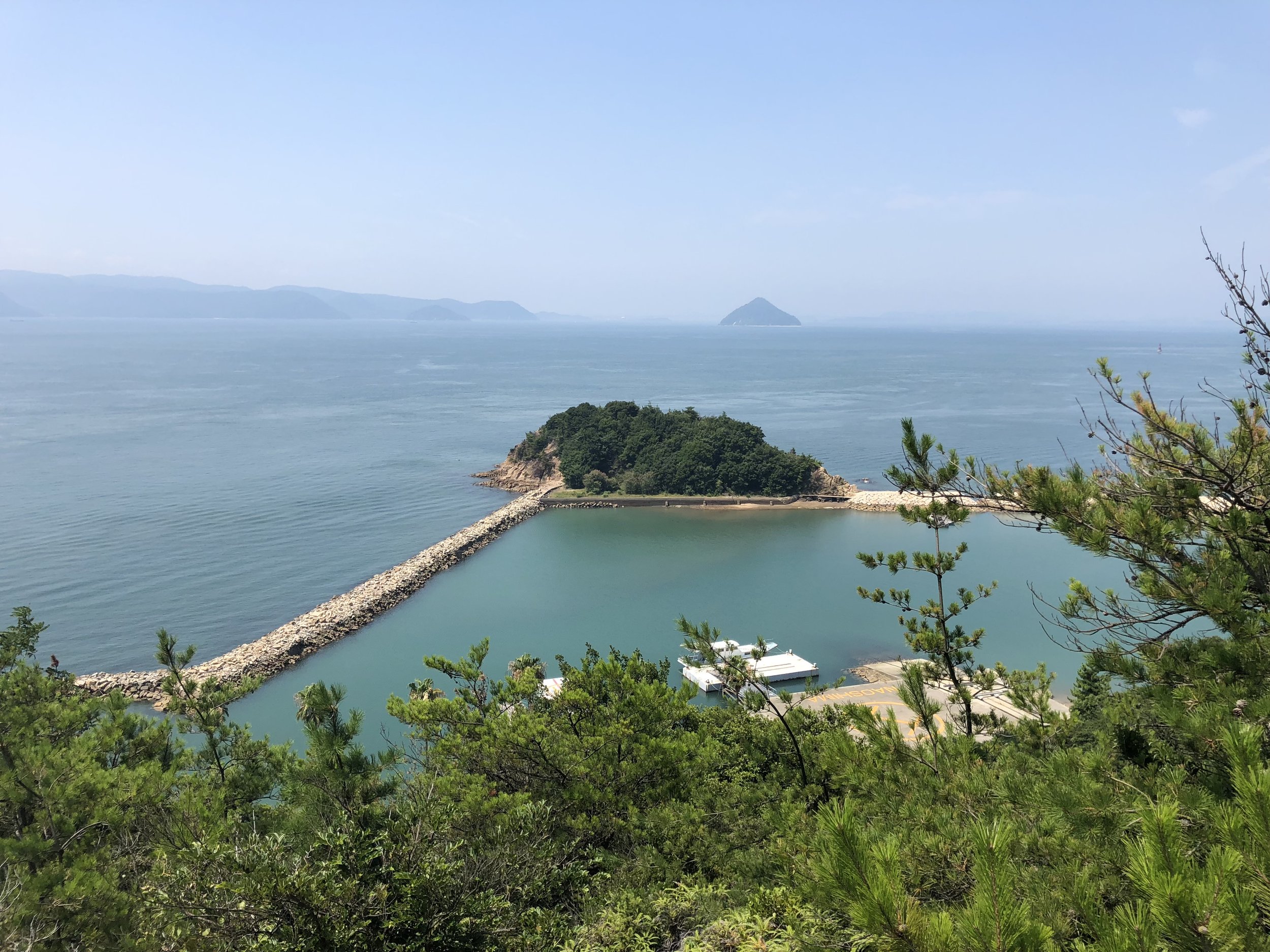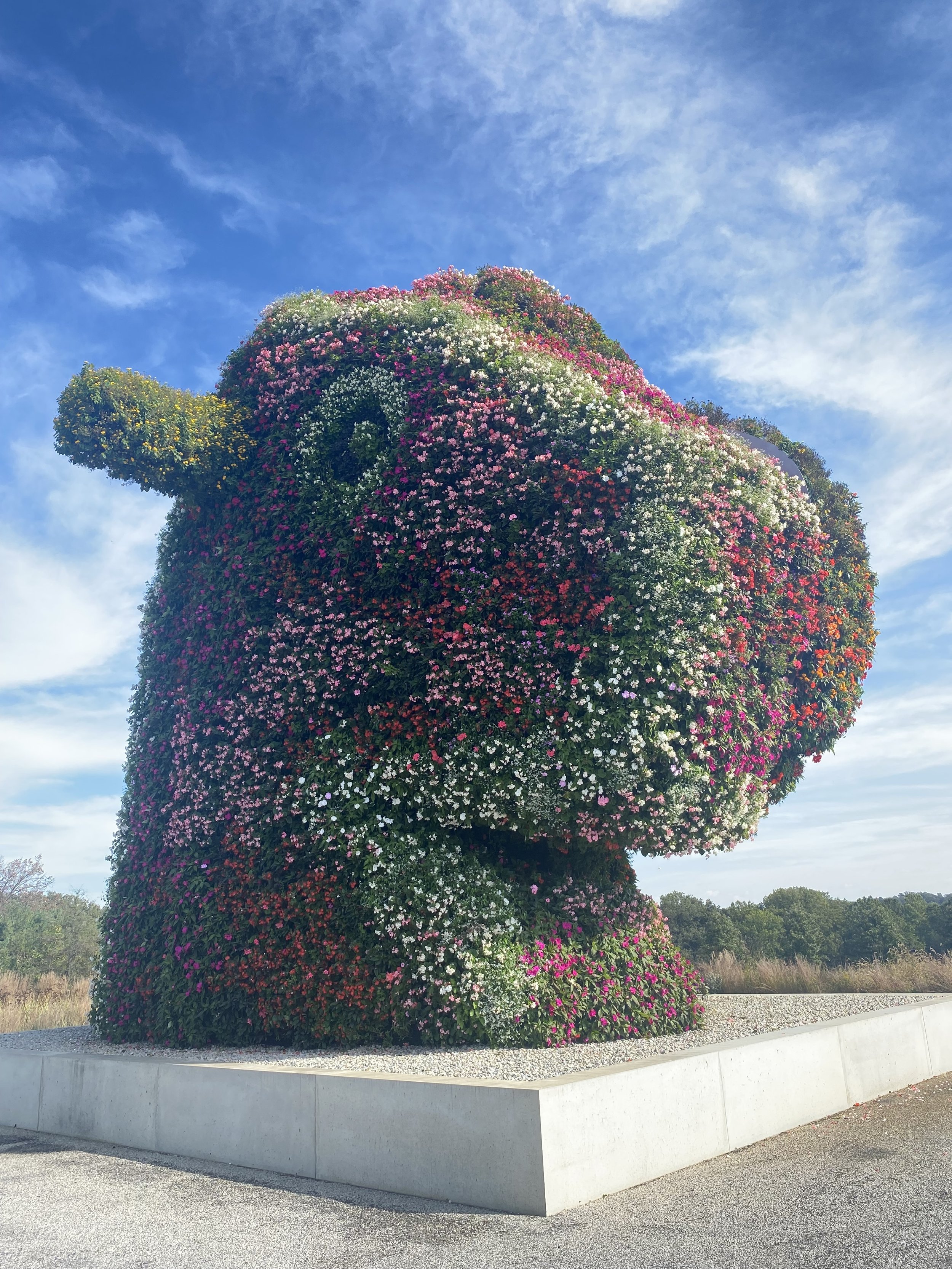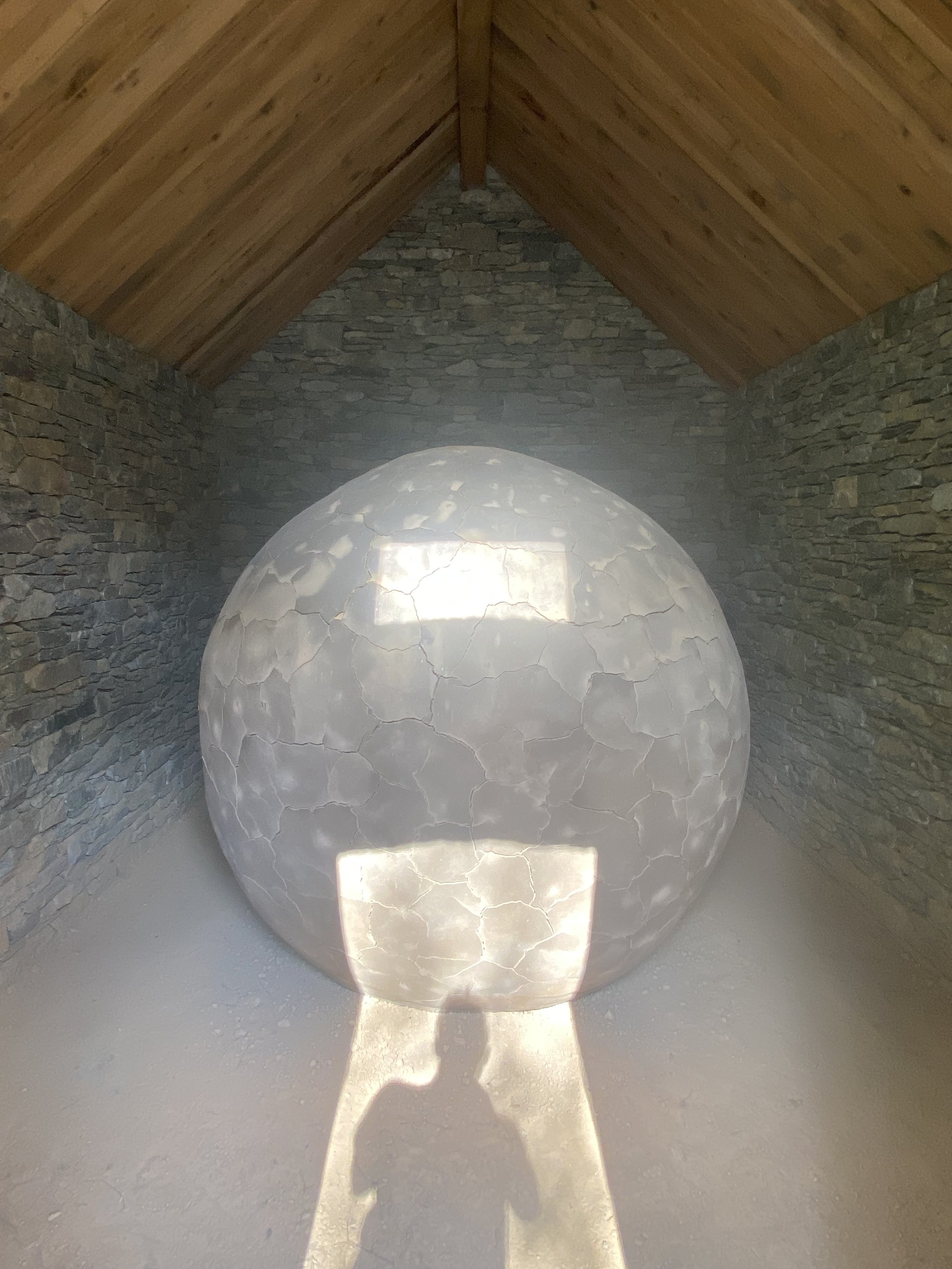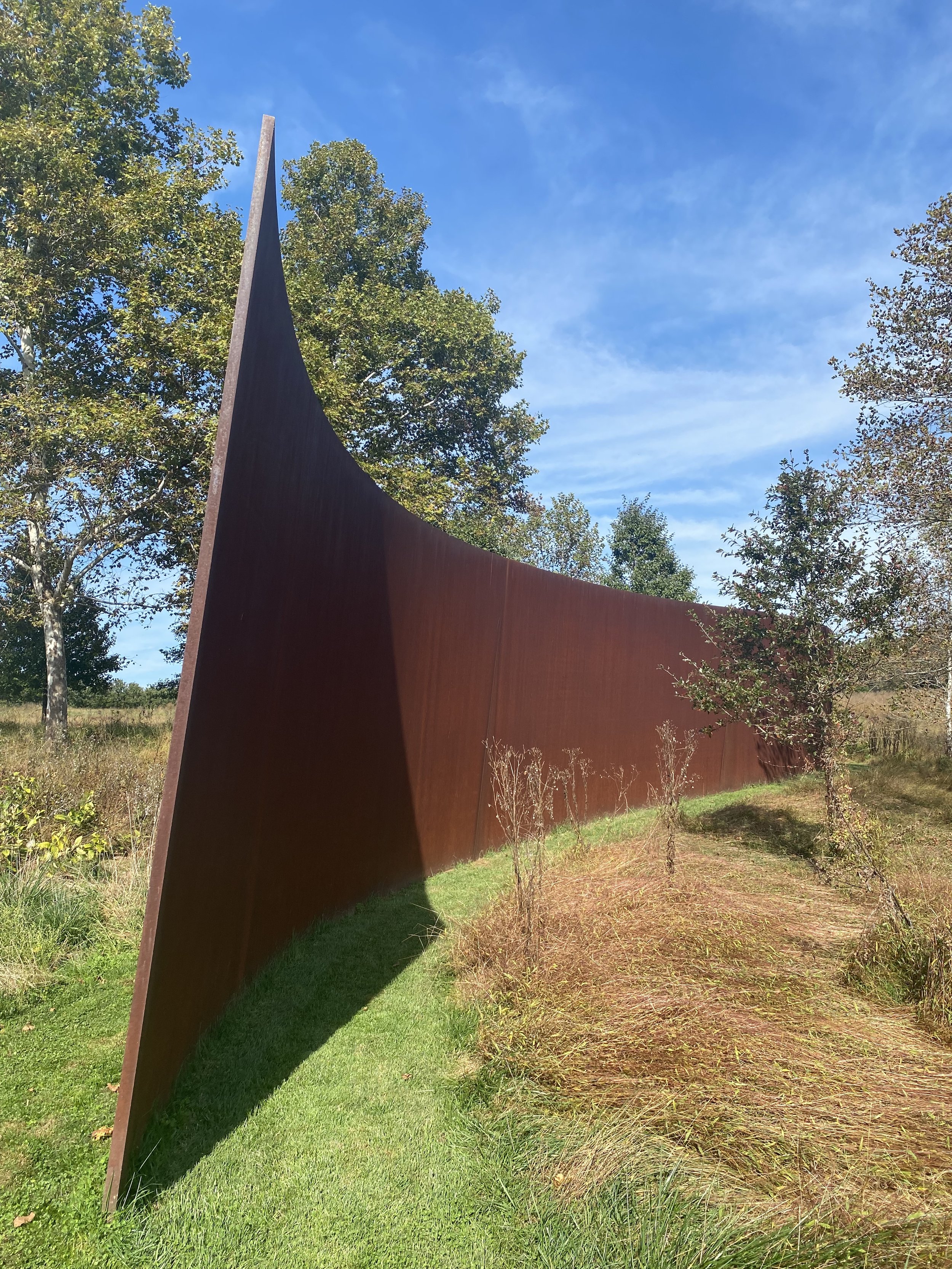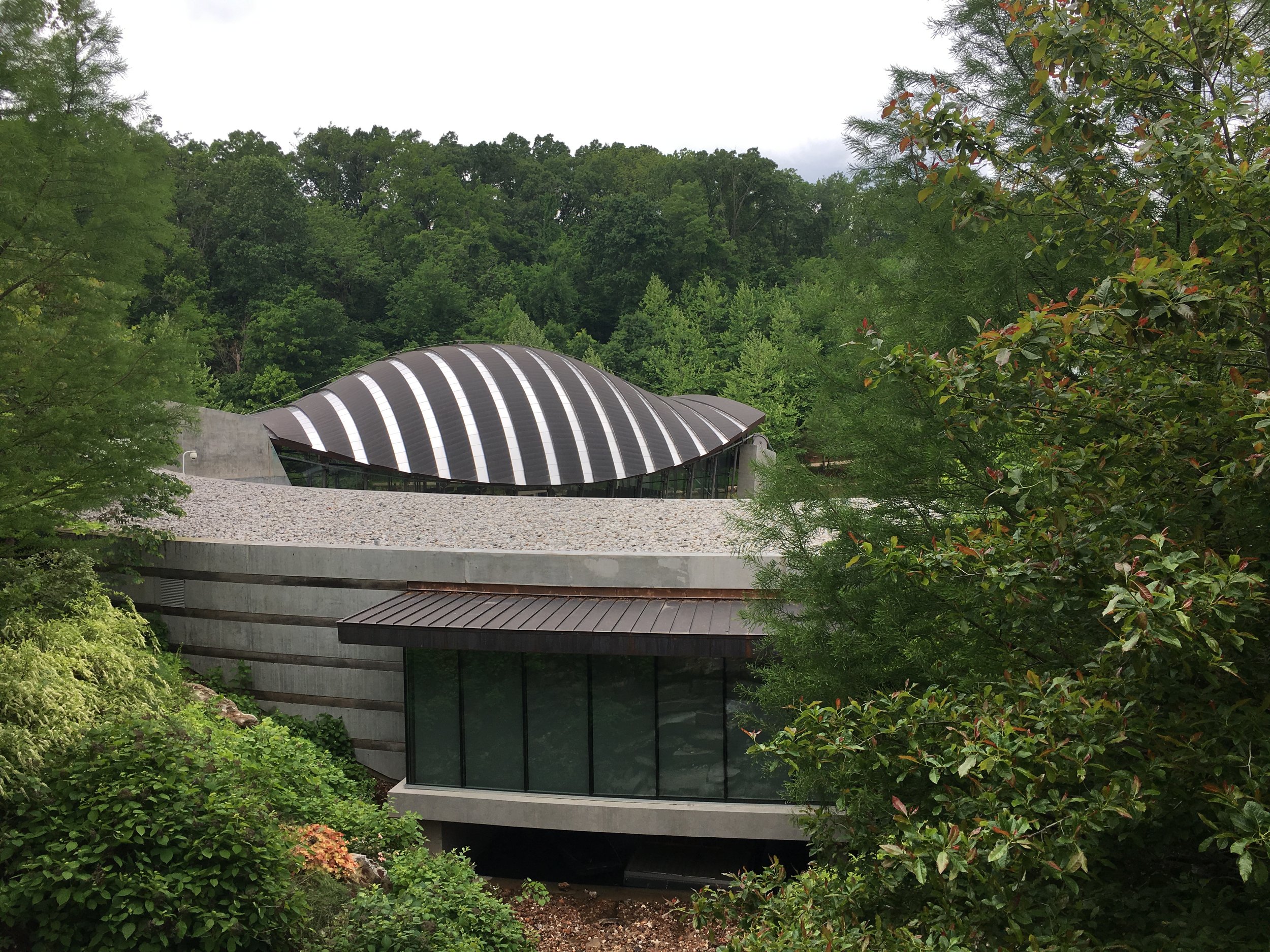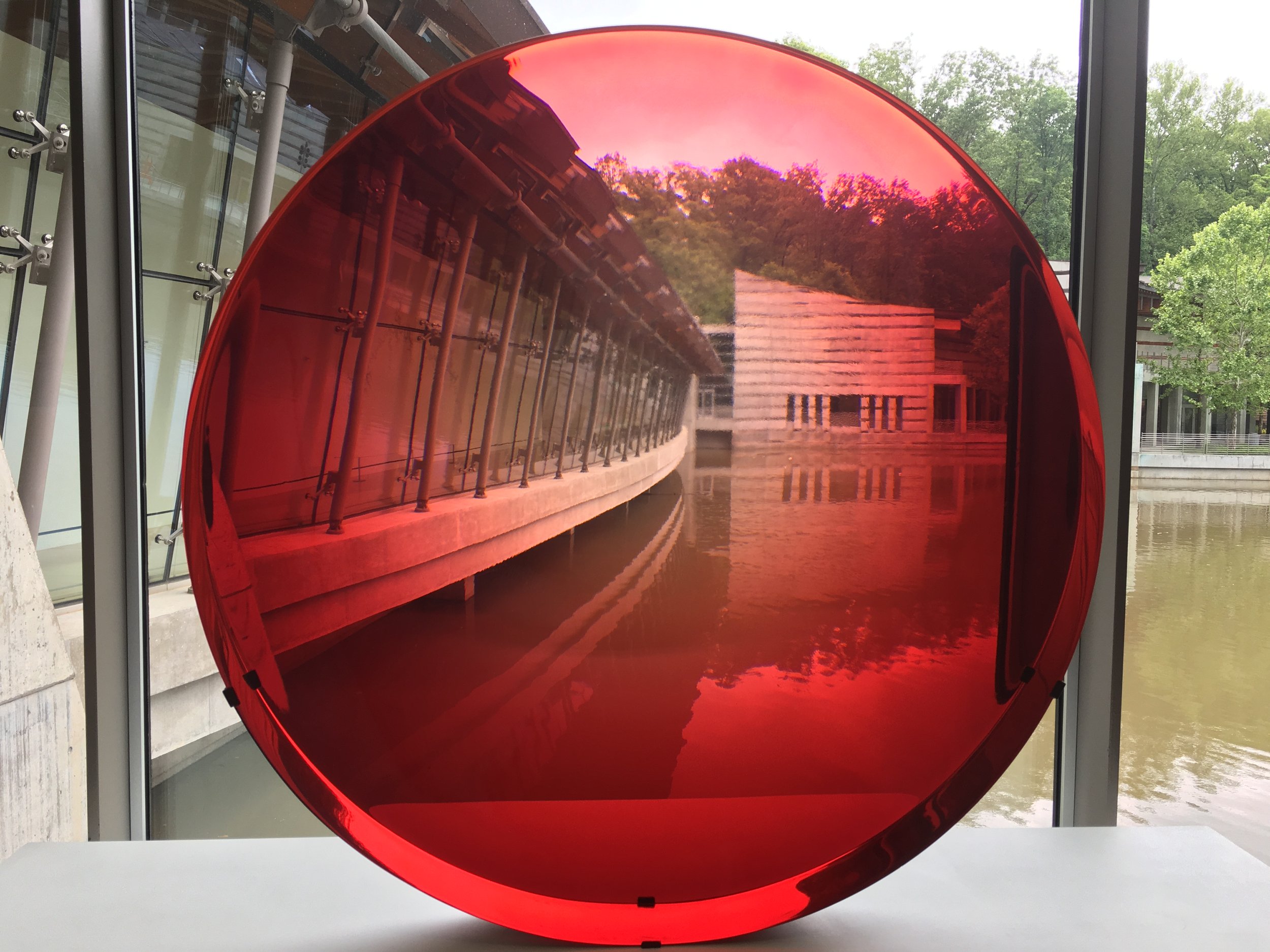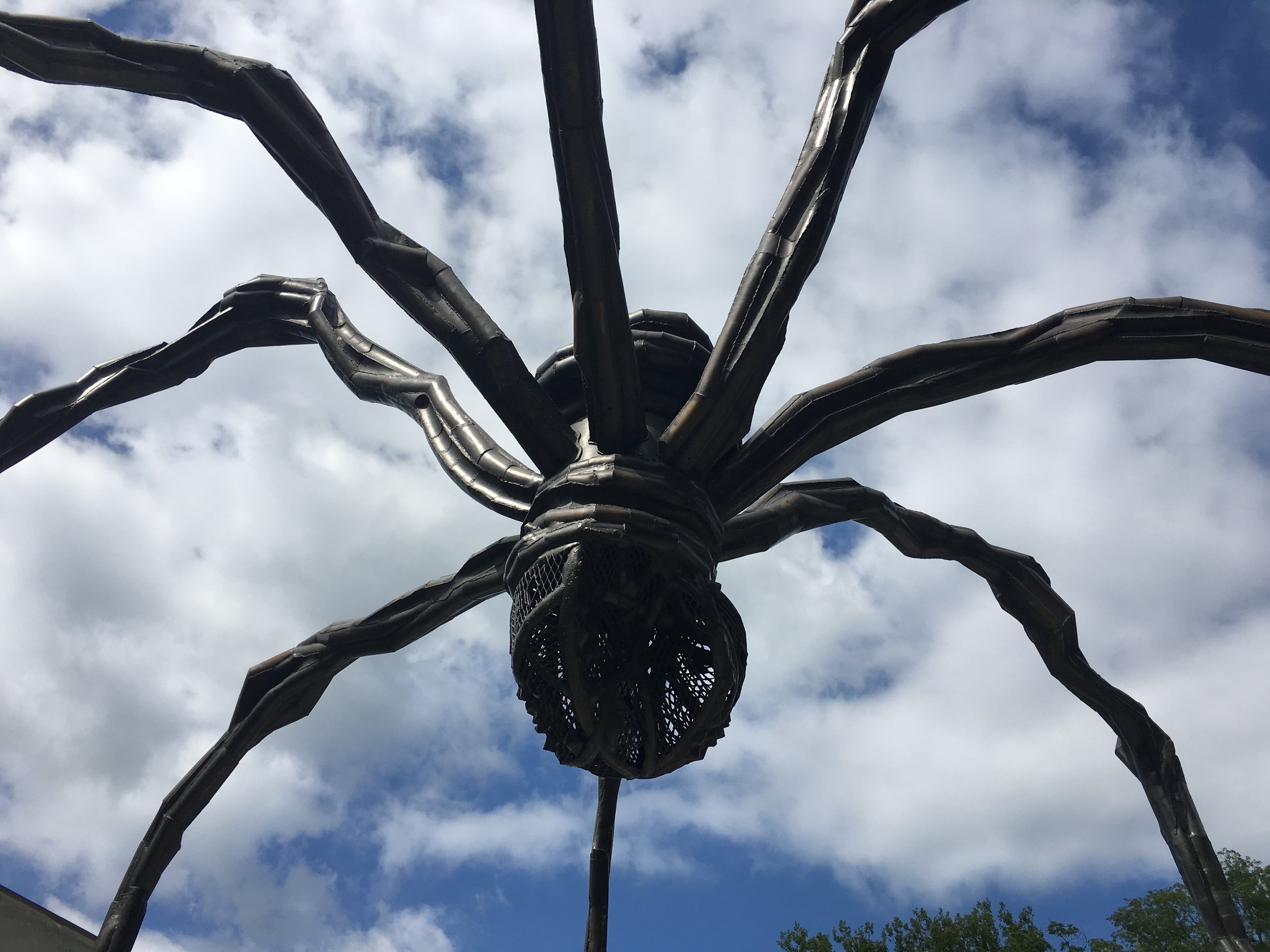Three Museums That Perfectly Balance Art with Architecture and Nature
Chichu, Glenstone, and Crystal Bridges
This week’s CT newsletter features three extraordinary art museums whose visitor experiences are meticulously crafted to complement the architecture they are housed in and the nature that surrounds them.
Having personally visited all three, I can assure you that achieving balance among these elements is a rare and sublime feat of brilliance.
Each museum embodies a unique synergy that enhances not only the core art-spectating experience but also the environment, creating a harmonious vector for reflection and inspiration.
I would safely rank all three of the following museums towards the top of a hundreds-deep list of my favorite art museums in the world.
I promise that each is worth planning a special, out-of-the-way trip to experience.
Chichu Art Museum
(Naoshima, Japan)
CT founder Matthew Blong poses in front of the Chichu Art Museum and in the reflection of Walter De Maria’s Seen/Unseen Known/Unknown (2000) in Naoshima, Japan
Small but mighty, Chichu Art Museum, located on the Japanese island of Naoshima, remarkably presents the work of just four artists: impressionist Claude Monet (1840-1926), Light and Space artist James Turrell (b. 1943), conceptualist Walter De Maria (1935-2023), and Japanese architect Tadao Ando (b. 1941). This uniquely tight curation allows for exploration of the connections between each artist’s use of color, shape, and form.
Several of Monet’s very best late water lily paintings, painted when the artist was already going blind from cataracts, share thematic affinity with installations by Turrell, who masterfully manipulates light and space to alter perception. Both engage the viewer with color, inviting them to immerse themselves in the shifting hues of nature and the artificial.
De Maria's highly polished, form-focused installations of columns, squares, triangles and spheres further enhance this dialogue through their sheer scale and simplicity, prompting contemplation of the surrounding environment.
Meanwhile, Ando’s architectural vision of building the museum into the earth seamlessly integrates the museum with the landscape, employing natural materials that echo the organic forms and colors found in Monet's work and shapes that appear in De Maria’s and Turrell’s.
Harmony between the museum's architecture and the landscape amplifies the experience, allowing viewers to appreciate how the artistic expressions of all four artists reflect and are enhanced by their mesmerizing surroundings.
A bird’s eye view of Chichu Art Museum, designed by Tadao Ando, and revealing the architect’s use of shapes to provide structure and natural light to a building that blends in with the nature and topography of the island of Naoshima.
Walter De Maria’s Time/Timeless/No Time (2004), permanently installed at the Chichu Art Museum, is a beautiful, enigmatic, immersive installation featuring a large black granite sphere set in a symmetrical room with golden panels and carefully arranged geometric steps. The artist, who has a nearly legendary reputation, was fascinated by time, space, and perception.
Nestled upon the grounds of the Chichu Art Museum, a pond adorned with delicate water lilies serves as a tranquil oasis that harmonizes nature and art and is an homage to Monet, whose late water lily paintings are on permanently display inside.
The view from the Chichu Art Museum of the Seto Inland Sea lying between the two major Japanese islands of Honshu and Shikoku is magnificent and changes with the seasons.
Glenstone Museum
(Potomac, Maryland)
Jeff Koons’ (b. 1955) Split-Rocker (2000), a stainless-steel frame and custom irrigation system that supports live plants tended by gardeners, is a highlight of the permanent collection of Maryland’s Glenstone Museum.
Just a few miles from where I grew up in Potomac, Maryland, is a remarkable contemporary art museum, the vision of an ambitious collector/curator power couple, Mitch and Emily Rales.
Over several decades, the Rales meticulously acquired adjacent parcels of land, transforming a semi-rural, suburban expanse into a 230-acre sanctuary for contemporary art. Just 45 minutes from Washington, D.C., the museum’s location places it in a unique context where urban accessibility meets tranquil natural beauty.
Glenstone’s post-war and contemporary art collection is both extensive and thoughtfully curated, featuring standout works from renowned artists such as Jeff Koons, Cy Twombly (1928-2011), and Donald Judd (1928-1994). Its main museum building was designed by the acclaimed architect Thomas Phifer (b. 1953), and its sleek, minimalist structure complements the artworks while integrating flawlessly with the landscape, providing a seamless transition between the interior and the surrounding environment.
The campus itself is breathtaking, enveloped by lush gardens, tranquil ponds, and expansive vistas that encourage exploration and reflection. Visitors wander through carefully landscaped paths that meander throughout the property, each turn offering new perspectives on both the art and the natural world.
While admission to Glenstone is free, the museum prioritizes an intimate visitor experience by limiting the number of guests to just several hundred per day. This thoughtful approach fosters a profound connection with the artworks and the serene environment surrounding them.
The serene interior courtyard of Glenstone Museum headlines a pond with water lilies that invites contemplation, creating a harmonious backdrop for the exceptional art experiences that await within.
Clay Houses (Boulder-Room-Holes) (2007) by British artist Andy Goldsworthy (b. 1956) is permanently installed on the grounds of Glenstone Museum and was built using locally-sourced stone and mud.
A sleek, wooden bench in a library adjacent to Glenstone’s main gallery provides the visitor with a pastoral view of the Potomac, Maryland countryside.
Contour 290 (2004), a Corten steel sculpture by Richard Serra (1938-2024), creates an interesting intersection of minimalist art with the landscape surrounding Glenstone Museum.
Crystal Bridges Museum
of American Art
(Bentonville, Arkansas)
A happy tortoise, part of Nancy Schön’s sculpture Tortoise and Hare (2009) greets visitors along the trail leading to the entrance of Crystal Bridges Museum of American Art.
Schön’s best known work is a sculpture of ducklings crossing the road in Boston’s Public Garden.
Walmart, founded by Sam Walton in 1962, put tiny Bentonville, Arkansas (2024 pop. 61,020) on the world map and turned it into one of the most prosperous and livable small cities in the U.S.
When Sam’s daughter Alice (b. 1949) was a child growing up in Bentonville, she played in the serene, wooded area a few miles from downtown Bentonville. Years later, as heiress to the Walton fortune and a billionaire art enthusiast, she invited renowned Israeli-Canadian architect Moshe Safdie (b. 1938) to design a museum that would celebrate American art and reflect the natural landscape she cherished.
Thus Crystal Bridges Museum of American Art, which opened its doors in 2011, is a marvel of modern architecture, magnificently blending with its natural surroundings. It features a series of pavilions that appear to float on the water, with large glass walls that invite the outside in and provide panoramic views of the surrounding woods. Safdie's design emphasizes sustainability and natural light, creating an inviting atmosphere for visitors to immerse themselves in art.
Within lies a remarkable collection of American art, spanning colonial times to contemporary works. Crystal Bridges is home to over 30,000 pieces, including iconic works from artists such as Georgia O’Keeffe (1887-1986), Norman Rockwell (1894-1978), and Andy Warhol (1928-1987).
This provides a narrative of American history through art, showcasing diverse voices and styles that capture the nation's evolving identity, especially through its strong focus on contemporary art.
The museum's surrounding parkland enhances the visitor experience, with miles of walking trails and beautiful natural features. The blend of art, architecture, and the beauty of the Ozark landscape creates a unique cultural destination that invites exploration and reflection, making Crystal Bridges a significant landmark in the American art landscape.
The main building of Crystal Bridges as seen in 2017. An expansion, also designed by Moshe Safdie, is underway, due for completion in 2026, and will expand the museum’s gallery space by 50%.
A view through a cast polyester resin lens sculpture by Fred Eversley (b. 1941) onto the water that bisects the ravine where the museum was constructed.
Bankrolled by the wealthiest woman in America, Crystal Bridges has acquired some stunningly expensive artworks for its permanent collection, including this edition of Louise Bourgeois’ (1911-2010) spider sculpture Maman (1999).
Skyspace: The Way of Color (2009), an installation by James Turrell at Crystal Bridges, was the artist’s first in his famous Skyspace series of structures that manipulate light coming through an ocular opening on the ceiling to feature LED lighting that is activated every evening at dusk for an immersive color experience that melds with nature and the heavens.


